
Since today marks the 43 Anniversary of the Monterey International Pop Festival I thought I would put together a feature filled with photos that I tweaked and videos of the artists that played there.
The Monterey International Pop Festival was planned in just seven weeks by promoter Lou Adler, John Phillips of The Mamas & the Papas, producer Alan Pariser, and publicist Derek Taylor. The festival board included members of The Beatles and The Beach Boys. The Monterey location had been known as the site for the long-running Monterey Jazz Festival and Monterey Folk Festival; the promoters saw the Monterey Pop festival as a way to validate rock music as an art form in the way jazz and folk were regarded.

The artists performed for free, with all revenue donated to charity, with the exception of Ravi Shankar, who was paid $3,000 for his afternoon-long performance on the sitar. Country Joe and the Fish were paid $5,000 not by the festival itself, but from revenue generated from the D.A. Pennebaker documentary.
The festival was later hailed as a triumph of organization and cooperation, setting a standard that few subsequent festivals have ever matched.
Lou Adler later reflected:
…Our idea for Monterey was to provide the best of everything -- sound equipment, sleeping and eating accommodations, transportation -- services that had never been provided for the artist before Monterey…

We set up an on-site first aid clinic, because we knew there would be a need for medical supervision and that we would encounter drug-related problems. We didn't want people who got themselves into trouble and needed medical attention to go untreated. Nor did we want their problems to ruin or in any way disturb other people or disrupt the music…
Our security worked with the Monterey police. The local law enforcement authorities never expected to like the people they came in contact with as much as they did. They never expected the spirit of 'Music, Love and Flowers' to take over to the point where they'd allow themselves to be festooned with flowers.
Almost every aspect of The Monterey International Pop Festival was a first: although the audience was predominantly white, Monterey's bill was truly multi-cultural and crossed all musical boundaries, mixing folk, blues, jazz, soul, R&B, rock, psychedelia, pop and classical genres, boasting a line-up that put established stars like The Mamas and the Papas, Simon & Garfunkel and The Byrds alongside groundbreaking new acts from the UK, the USA, South Africa and India.

Although already a big act in the UK, and gaining some attention in the US, Monterey was the concert that propelled The Who into the American mainstream. The band's famed performance was decided by a coin toss, since guitarists Pete Townshend and Jimi Hendrix each refused to go on after the other.
Hendrix ended his Monterey performance with an unpredictable version of "Wild Thing", which he capped by kneeling over his guitar, pouring lighter fluid over it, setting it aflame, and then smashing it.[5] This produced unforeseen sounds and these actions contributed to his rising popularity in the USA.
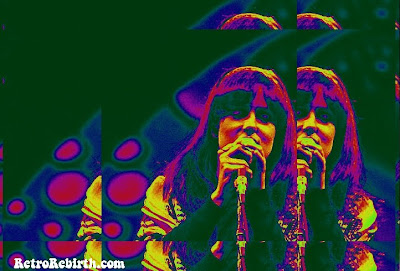
Monterey Pop was also one of the earliest major public performances for Janis Joplin, who appeared as a member of Big Brother and The Holding Company. Joplin was seen swigging from a bottle of Southern Comfort as she gave a provocative rendition of the song "Ball 'n' Chain". Columbia Records signed Big Brother and The Holding Company on the basis of their performance at Monterey.[5] "I became a supporter of feminism watching Janis Joplin at the Monterey Festival", says John McCleary, author of The Hippie Dictionary. "A lot of people had similar experiences watching female role models with that kind of power, unafraid to express themselves sexually while demanding their rights."
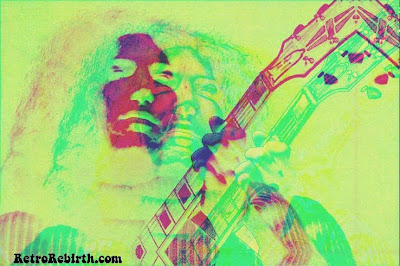
Monterey was the first time that soul star Otis Redding performed in front of a large and predominantly white audience in his home country. Redding, backed in his performance by Booker T. & The MG's, was included on the bill through the efforts of promoter Jerry Wexler, who saw the festival as an opportunity to advance Redding's career. " So this is the love crowd" was Redding's famous quote to the audience. Redding's show included his single "Respect" (which had become an even bigger hit for Aretha Franklin just weeks earlier). Although the festival finally gave Redding mainstream attention, it would be one of his last major performances. He died 6 months later in a plane crash at the age of 26.
Ravi Shankar was another artist who was introduced to America at the Monterey festival. Eighteen minutes of Dhun (Dadra and Fast Teental) an excerpt from Shankar's four-hour performance at the 1967 Monterey Pop Festival, concluded the Monterey Pop film, introducing the artist to a new generation of music fans.
The Mamas & the Papas performed the closing act of the festival as member John Phillips helped organize the festival. They also introduced several of the acts including Scott McKenzie. They played some of their biggest hits including Monday, Monday and California Dreamin'.
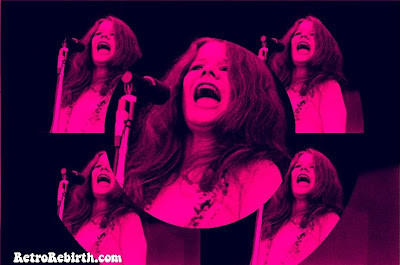
The festival launched the careers of many who played there, making some of them into stars virtually overnight. Some artists who rose to popularity following their appearances at Monterey included Janis Joplin, Laura Nyro, Canned Heat, Otis Redding, Steve Miller and Indian sitar maestro Ravi Shankar.
Monterey was also the first high-profile event to mix acts from major regional music centres in the U.S.A. — San Francisco, Los Angeles, Chicago, Memphis and New York City — and it was the first time many of these bands had met each other in person. It was a particularly important meeting place for bands from the Bay Area and L.A., who had tended to regard each other with a degree of suspicion — Frank Zappa for one made no secret of his low regard for some of the San Francisco bands — and until that point the two scenes had been developing separately and along fairly distinct lines. Paul Kantner, of Jefferson Airplane, said, “The idea that San Francisco was heralding was a bit of freedom from oppression.”
Monterey also marked a significant changing of the guard in British music. The Who and Eric Burdon & The New Animals represented the UK, with The Beatles and The Rolling Stones conspicuous by their absence. The Beatles had by then retired from touring and The Stones were unable to tour America due the recent drug busts and trials of Mick Jagger and Keith Richards. The Stone's Brian Jones appeared on his own, wafting through the crowd, resplendent in full psychedelic regalia, and appearing on stage briefly to introduce Jimi Hendrix. As it transpired, it was two more years before The Stones toured again, by which time Jones was dead. The Beatles never toured again. Meanwhile, The Who leaped into the breach and became the top UK touring act of the period.

Also notable was the festival's innovative sound system, designed and built by audio engineer Abe Jacob, who started his career doing live sound for San Francisco bands and went on to become a leading sound designer for the American theatre. Jacob's groundbreaking Monterey sound system was the progenitor of all the large-scale PAs that followed[citation needed]. It was a key factor in the festival's success and it was greatly appreciated by the artists—in the Monterey film, David Crosby can clearly be seen saying "Great sound system!" to band-mate Chris Hillman at the start of The Byrds' performance.
Electronic music pioneers Paul Beaver and Bernie Krause set up a booth at Monterey to demonstrate the new electronic music synthesizer developed by Robert Moog. Beaver and Krause had bought one of Moog's first synthesizers in 1966 and had spent a fruitless year trying to get someone in Hollywood interested in using it. Through their demonstration booth at Monterey, they gained the interest of acts including The Doors, The Byrds, The Rolling Stones, Simon & Garfunkel and others. This quickly built into a steady stream of business and the eccentric Beaver was soon one of the busiest session men in L.A., and he and Krause earned a contract with Warner Brothers.

Eric Burdon and The Animals later that same year sang a song about the festival entitled "Monterey", which quoted a line from the Byrds song "Renaissance Fair" ("I think that maybe I'm dreamin'"). In the song, Burdon mentions Monterey performers The Byrds, Jefferson Airplane, Ravi Shankar, Jimi Hendrix, The Who, Hugh Masekela, The Grateful Dead, and The Rolling Stones' Brian Jones ("His Majesty Prince Jones smiled as he moved among the crowd"). The instruments used in the song imitate the styles of these performers.
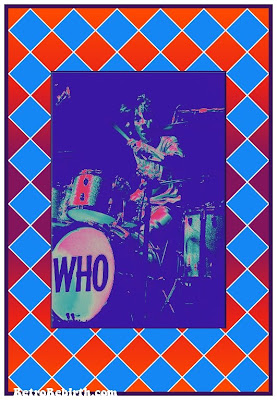
Monterey International Pop Festival Performers
Friday, June 16
* The Association
* The Paupers
* Lou Rawls
* Beverly
* Johnny Rivers
* Eric Burdon and The Animals
* Simon and Garfunkel
Saturday, June 17
* Canned Heat
* Big Brother and the Holding Company
* Country Joe and the Fish
* Al Kooper
* The Butterfield Blues Band
* The Electric Flag
* Quicksilver Messenger Service
* Steve Miller Band
* Moby Grape
* Hugh Masekela
* The Byrds
* Laura Nyro
* Jefferson Airplane
* Booker T. & the M.G.s
* Otis Redding
Sunday, June 18
* Ravi Shankar
* The Blues Project
* Big Brother and the Holding Company
* The Group With No Name
* Buffalo Springfield
* The Who
* The Grateful Dead
* The Jimi Hendrix Experience
* Scott McKenzie
* The Mamas & the Papas
Various Artists Performing At The Monterey Pop Festival
Jimi Hendrix - Like A Rolling Stone
Buffalo Springfield - For What It's Worth
The Byrds - Hey Joe
The Grateful Dead - Viola Lee Blues
Country Joe & the Fish
Quicksilver Messenger Service
The Mamas and the Papas - Somebody Groovy
Have a groovy vintage retro day!
- Retro Rebirth

If you liked this article then make sure you subscribe to the feed via RSS It's Free. You can also follow me on Twitter too!
Become a Retro Rebirth Fan on our Facebook Page
Check out the Retro Rebirth Design Catalog and see what groovy vintage retro Music & Pop Culture designs we have for sale.

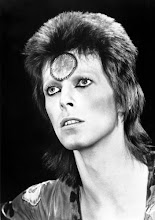
No comments:
Post a Comment